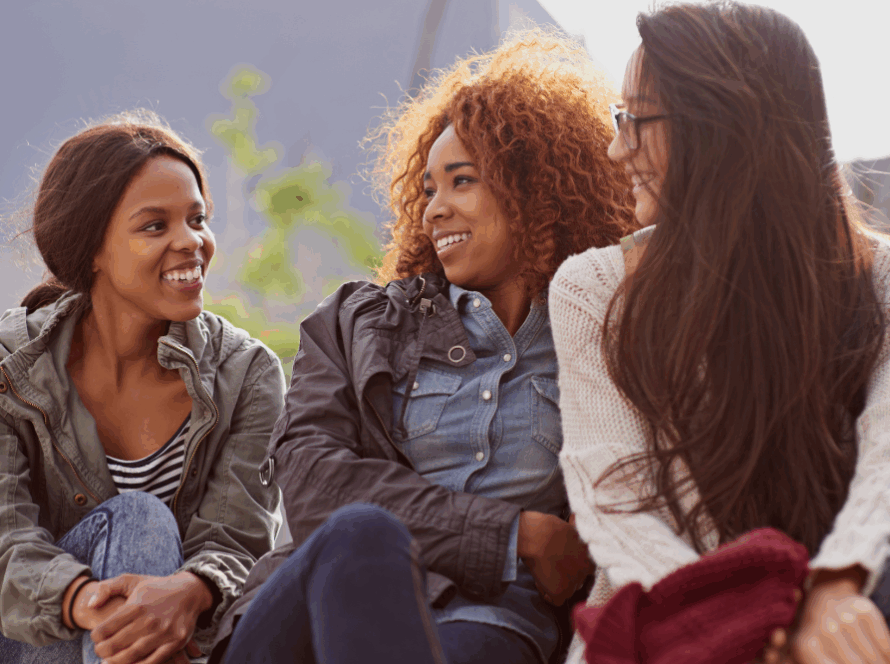Loneliness is more than being alone — it’s feeling unseen and disconnected. Discover how psilocybin-assisted therapy offers a path from isolation into embodied connection, grounded in research and integration.
Introduction: More Than an Empty Room
Loneliness isn’t just about being physically alone. It’s the ache of being unseen, unheard, disconnected. You can be in a crowded space and feel hollow inside. That deep interior gap—some call it the silent wound—is where many of us dwell without realizing it.
In recent years, psilocybin-assisted therapy has emerged as a hopeful bridge for those stuck in that void. This isn’t magical thinking — there’s growing empirical and clinical evidence that psilocybin can help people move from isolation into more meaningful connection.
In this post, we’ll trace the journey from solitude to communion:
- The silent epidemic of loneliness and why it matters
- How psilocybin opens the doors to empathy, connection, and emotional vulnerability
- Moving from isolation to integration — how to translate psychedelic insights into everyday life
- A concluding call: you don’t have to stay in the void forever
Let’s walk this path together.
The Silent Epidemic of Loneliness
We often misunderstand loneliness as simply being without people. But many who feel it are surrounded by faces, phone screens, chatter. The core of loneliness is not physical isolation — it’s emotional disconnection, the sense that no one sees the real you, listens to you, or truly knows you.
It’s a place where your mind tightens around shame, past wounds, fear of rejection. You withdraw. You let old scars whisper: “You don’t deserve closeness.” Over time, that protective shell becomes a prison.
Our Modern Paradox: More Connectivity, Less Belonging
We live in the glitter of digital connection — likes, messages, social media threads. Yet those often scratch the surface. They don’t whisper what you feel, don’t share your weight. We’ve built walls around our emotional interior, even while scrolling profiles.
Communication technologies promised to unite us. But when empathy is replaced by emoji reactions, when deep conversation gives way to soundbites, the emptiness grows.
The Dangers of Loneliness
Loneliness is more than uncomfortable—it’s harmful. Research links chronic loneliness to depression, anxiety, increased inflammation, weakened immune function, and even higher risk of cardiovascular disease. It’s not a “flaw” — it’s a signal the system is broken, screaming for reconnection.
Over time, the lonely brain gets rewired: vigilance, social-anxiety circuits, exclusion sensitivity. You pull away further, reinforcing the cycle.
And unresolved trauma often lurks behind that pattern. Maybe you were taught that your feelings don’t matter, or that vulnerability is dangerous. That programming is ancient — and hard to override alone.
In short, being lonely is a high-risk state. It’s not just a mood; it’s a crisis of belonging.
How Psilocybin Creates Openness
Psilocybin therapy doesn’t “cure” loneliness with a pill. But it loosens the grip of fear, dissolves walls, and helps the psyche remember capacity for empathy, awe, connection.
Let’s unpack the mechanism — mystical, psychological, and neural — of how psilocybin can open what was closed.
The Science: Social Connectedness and Empathy
- A recent review shows that psilocybin can enhance empathy and prosocial behavior — emotional attunement, seeing others, resonating with them. Nature
- Studies show psychedelics (including psilocybin) can increase feelings of connectedness to both nature and social worlds. ScienceDirect
- Clinical trials in psilocybin-assisted therapy report shifts not only in mood but in psycho-social growth — meaning, purpose, relational openness. PubMed Central
- Research in PNAS showed that transformational experiences (with psychedelics) are tied to enhanced social connectedness and reduced alienation. PNAS
In plain terms: psilocybin can rewire how your brain and psyche relate to others.
Mystical Experiences, Dissolution of Self, and Beyond
Part of psilocybin’s power is that it can allow a temporary loosening or even dissolution of rigid identity walls. In that state, people often report:
- A sense of connectedness to all living beings
- The boundaries between self and other softening
- Emotional unblocking — tears, joy, grief, catharsis
That mystical or transcendent quality is not just a “pretty trip” — many therapeutic benefits correlate with intentional, meaningful mystical experiences.
The classic Marsh Chapel Experiment in the 1960s (Good Friday psilocybin vs placebo) showed that many participants rated the psilocybin experience among the most meaningful spiritual events of their lives.
The Neural Grounds: Flexibility, Plasticity, and New Patterns
At a brain level, psilocybin increases neural entropy— more flexibility, more less-constrained connectivity — allowing new patterns to emerge. arXiv
It also reduces rigid activation of the default mode network (DMN), the neural “autopilot” of self-narrative. That gives permission for new perspectives, new relational maps.
Moreover, therapy theorists argue psilocybin helps with experiential avoidance — the tendency to suppress or run from painful emotions. Zeifman et al. explain that psilocybin may target such avoidance, which is a core transdiagnostic factor in many mental health conditions. ScienceDirect
In short: psilocybin creates fertile ground — psychological, emotional, neural — for rewiring, re-sensing, re-mapping connection.
The Social Context Matters
One more thing: connection doesn’t arise in a vacuum. The setting matters: relational support, therapeutic container, community — these accentuate the openness effect. The role of community in psychedelic healing has been recognized as a therapeutic tool in itself. PubMed Central
In group or communal psychedelic settings, participants not only heal personally — they witness one another, recognize shared vulnerabilities, and weave relational safety.
From Isolation to Integration: The Path to Connection
Psilocybin can open the door — but you must choose to walk through. Here’s how the journey often unfolds, and what supports make it stick.
The Stages of Transformation
Over time, clients may move from:
| Before | After (with integration) |
|---|---|
| Avoiding people | Actively seeking meaningful connection |
| Numbing or dissociating | Being present with emotion |
| Feeling invisible or hollow | Feeling grounded, seen, alive |
| Hypervigilance, shame walls | Trust, vulnerability, acceptance |
But this is not linear. There may be regressions, relapses, resistance. It is work, not magic.
The Role of Integration: Grounding the Vision
Integration is not optional. Without it, the insights may evaporate under life’s pressures. Good integration practices include:
- Therapeutic processing — talk, art, somatic practices
- Witnessing circles — sharing your experience with compassionate others
- Rituals and symbolic acts — writing, movement, symbolic gestures
- Slow re-entry — carefully testing new relational moves
- Boundaries and support systems — you need safe containers
Integration bridges the visionary state back into the everyday. It helps you bring back the connection from the “trip world” into the world of phones, grocery lines, families.
Common Obstacles & Resistance
Some common barriers that arise:
- Old survival habits resist change (“Better the familiar pain than the unknown risk”)
- Shame, self-criticism that re-emerges
- Fear of dependency or being hurt again
- Relational shifts in old patterns (other people may resist your changes)
A strong guide or coach is someone who presses against the comfortable, holds the line, but also honors your pace.
The Power of Micro-Moves and Embodied Connection
Connection isn’t all or nothing. After therapy, it might begin with small gestures:
- Deep eye contact with someone
- Listening without agenda
- Sharing a vulnerability
- Walking in nature with someone
- Ritual meeting once a week with a friend
Over time, these micro-moves accumulate. The brain and heart rewires toward relational openness.
Pulling It Together: A New Vision of Belonging
When you come through the door of your isolation, you don’t just rejoin a world — you help create it. Connection is reciprocal.
You begin to see others as mirrors of parts you once hid. You resonate with their stories. You are no longer alone in your pain — it becomes relational. Empathy flows, compassion grows.
You reclaim the relational wiring you were born with. You remember: you are built for connection.
Psilocybin is a compass. Integration is the map. The bridge you cross is made of your willingness to show up, to risk, to surrender.
Ethical, Practical, and Safety Considerations
Because this is sacred ground, we must discuss practical guardrails.
- Legal & clinical status
In many places, psilocybin is still illegal, experimental, or restricted. Approach only through authorized clinical trials or legal frameworks. - Set & setting is everything
Emotional safety, trust with facilitator, preparation and after-support must be top-tier. - Contraindications & risk
People with certain psychotic disorders, bipolar mania risk, or unstable medical conditions need extreme caution. - Not a shortcut
This is not a self-help hack. You don’t just “take a dose” and wake up connected. You must prepare, hold space, integrate. - Values, boundaries, surprise
The insights you receive may demand changes — relational boundaries, life shifts, values recalibration. Be ready, with support.
Conclusion: From the Void, a Door Opens
Loneliness may feel permanent. But it doesn’t have to be your story’s end.
Psilocybin-assisted therapy is not a magic bullet — but it’s a powerful torch in the dark. It helps dissolve the walls, rupture the armor, and invite you back home to your relational self.
From the fog of loneliness, you may rediscover that longing was never misguided — it was calling you back. Back to your body, your heart, your tribe. Back to seeing and being seen.
✨ Ready to explore? Visit www.psyberspacetherapy.com
👉 Schedule Your Free 20-Minute Consultation Here



